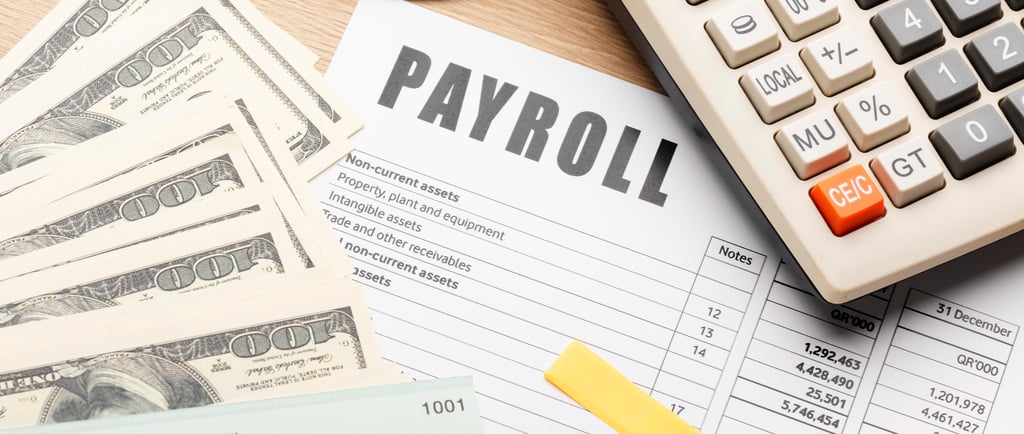How much does a Pilates Instructor Make? Understanding Pilates Instructors’ Salaries in the U.S.
Learn how much a Pilates instructor makes in the United States. (Photo Credit: Freepik.com)
PILATES FOR PILATES INSTRUCTORS / PILATES TEACHERS / FITNESS INSTRUCTORSTHE BUSINESS OF PILATESPILATES THOUGHT PIECES
Corie Kellman
7/29/20255 min read


Photo Credit: Freepik.com
Understanding Earning Potential as a Pilates Instructor
If you’re considering becoming a Pilates instructor or just curious about how much they pull in, you’re definitely not alone! The world of fitness can be quite enticing, especially when you're passionate about helping others. But before diving into the nitty-gritty on how much a Pilates instructor makes in the United States, it's important to understand the common employment classifications of fitness instructors. You can learn more about that in this article.
Factors Influencing Earnings
The income of a Pilates instructor can vary widely based on a variety of factors. Here are a few common factors to consider:
Number of years certified: It doesn't always make sense, but many studios will base starting rates off by numbers of years certified without consideration on number of years actively teaching or total number of classes taught. It is an unfortunate oversight by many in the industry. For all intents and purposes, someone could be certified for 15 years and only teach 4 sessions per week and be valued more than someone certified for 1 year who teach 20 sessions per week. This is something you may want to be prepared to highlight if you are in your first couple of years of certification. If you teach frequently, make sure you are able to articulate that your experience is just as broad as someone who has been certified for a long time but teaches less frequently.
Popularity of Classes: It also doesn't always make sense, because you may be available and offer to teach at an unpopular time (2:30PM, for example,) however, many studios will set a rate that is dependent upon the number of people who show up for class. At face value, studios will believe that the better instructor you are, the more likely you are to attract attendance. And while being a great teacher does contribute to class popularity, there are so many other factors that also contribute to class attendance. Be prepare to speak to those points or accept the downsides.
Number of Total Available Spots and Price of Classes: The more revenue a class can generate, the more likely you are to maximize your pay rate for that class.
Number of Total Members vs Total Number of Classes: The more classes a studio offers, the higher the competition for members to choose your class vs another instructor's class. Studios who have low utilization rates will likely affect your ability to increase your earnings. If the studio is struggling to attract and maintain a membership count that supports the number of classes and spots in class they offer, it can greatly affect your ability to fill classes.
Number of Classes Available for You to Pick Up: While instructors are in high demand, scheduling can sometime be a nightmare. If you do not have a studio that supports having multiple classes or Private training sessions back to back, your ability to be efficient is affected. Many instructors don't get paid for time they are not actively teaching class--so if you have a long break in between classes, but not enough time to fill that with something else, you're ability to maximize earning for your day goes down.
Seasonal Slumps: The summer months tend to be a little slower across the fitness industry. As children are out of school for the summer and vacations are factored in, adults tend to lose control of a consistent schedule. Not to mention, the nice days that clients will choose to enjoy the weather rather than come in to workout.
Location: With any career, location can affect pay rates. This is of course a factor, but in my experience, is less of a risk factor than the before-mentioned. Cities with lower costs of living may charge less for classes to their members and therefore pay less to their instructors, but I find that it is nominal when looking at the big picture across the board.
Average Salary Expectations
You are encourage to ask what the rates are in your market in order to get a clear understanding. It is appropriate to ask towards the end of your first your interview what the instructor rates are. The interview process is not generally long (usually an interview and audition) and it's important that the studio's rates meet your expectations rather than wait to be disappointed by an offer. It is also helpful to ask other instructors in your market if they can share their personal experience and rates. Most will be happy to share. It is not as taboo in this industry to share rates, as most studios do not stray far from their standard rates for all instructors and are usually transparent about the contributing factors.
While I have been teaching for over 5 years and my rates are different today, here are a few example rates from my personal experience in my first two years of teaching to provide a ball park of what you may expect when you first start teaching:
$25 Flat Rate per class as an Apprentice (Pre-certification)
$36 Flat Rate per class in the first 2 years of teaching
$32 Per Class for 0-6 plus $2 per head over 6 up to $44 per class
$25 Per Class for 0-1 heads, $28 for 2 heads, plus $3 per head over 1 up to $34 per class
$0 for 0 heads, $25 for 1 head and $2 for each head over 1 up to $46 per class
It is uncommon to see any health benefits, or paid time off (no paid sick or vacation days), though you may be provided the benefit of free class credits for yourself, discounts on retail merchandise and other partnership perks.
Is Becoming a Pilates Instructor It Worth It?
So, is becoming a Pilates instructor worth it? This is a heavy question and there are a lot of contributing factors.
For me, I found a passion for helping people and this skill set became my safety net in times of economic uncertainty and mass layoffs. It was absolutely worth it for me, for the simple fact that it allowed me some breathing room and income when my 9 to 5 corporate jobs failed me.
When you look at making this a full time career, while the hourly rates are attractive, it is very challenging to do this full time to sustain a livable annual salary if you are a single-income household. It is possible, but it is a grind and the current state of the Pilates industry and employment practices and standards do not make it easy. I have hopes that there will be shifts in this as studio owners are pressured to retain top talent in order to run a business they otherwise could not without a qualified instructor. But the hard truth is that this will take time and brave business owners and leaders willing to invest in human capital and risk short term revenue gains.
Ultimately, understanding how much a Pilates instructor makes in the United States helps you make an informed decision. Whether you’re looking to jumpstart a new career or simply become a part-time instructor, knowing what to expect salary-wise is an essential step. Ready to roll out the mat and embark on this journey? Check out our mentorship offerings if you want a personal guide and champion.
CONTACT US
© GRADUATE PILATES, LLC. 2025.
All rights reserved.
